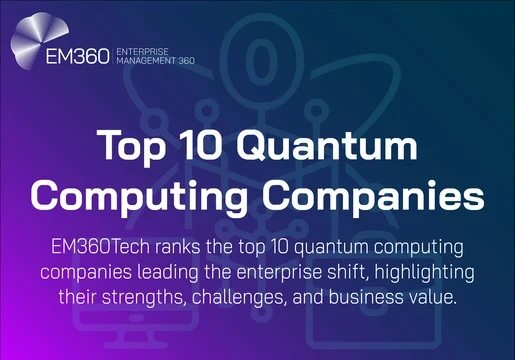Article contributed by Ryan Purvis, Head of Solutions, Lakeside Software
Recessions, even if they’re anticipated, are when most leaders want to restrict their funding and limit resources. Re-evaluating IT investments or IT asset management is one way for companies to right-size their budgets without reduced operational capacity associated with mass layoffs.
Cazoo. Airbnb. Netflix. These are just a few examples of the big names that have announced sweeping layoffs in the last few months. The reasons are varied, from overzealous market projections to reduced customer demand. It seems today that the “growth by any means” philosophy provides diminishing returns across numerous industries.
An uncertain economy coupled and the unprecedented growth in digital innovation has left many companies re-evaluating what is working (and what isn’t). Digital transformation is a vital component of success today, and this became starkly apparent during the pandemic.
Almost overnight, entire companies had to operate virtually, while many were facing diminished or uncertain funds. The shift to remote and hybrid work unveiled a need for increased use of new digital tools to support WFH and required employees to have a basic understanding of technology and IT troubleshooting, which not all employees innately have.

What is IT asset management, and how can it help?
Against this new normal and with the threat of an economic downturn on the horizon, now is the time to proactively evaluate existing and future IT investments to protect business continuity.
Most effective organisations are familiar with the need for processes, procedures, and systems to help adhere to their goals, including the management and use of various IT assets.
IT Asset Management (ITAM) incorporates financial, inventory, and contractual functions to help firms right size spending and support strategic decision-making within the IT environment. Efficient organisations track and maintain an organisation's IT assets. The pandemic made this so much harder.
It restricted many people’s ability to work from the office and confined them to their homes. They suddenly were forced to reconfigure their dining room tables into makeshift offices and figure out how to conduct much of the work they once did in-person from a remote setting. This included downloading messaging and video applications, pivoting to new project management tools, and more. Yet many executives remained oblivious (intentionally or otherwise) to how much work it took for their employees to adjust.
Suddenly, employees took on the role of an at-home IT associate and continued with their regular work. When WiFi issues emerged or technical applications suddenly stopped working, there was no IT department for them to call over to their cubicle. Suddenly, they took on a multifaceted role they weren’t prepared for. Ensuring that employees have the correct hardware and applications for their needs and available IT help to remedy any issues should be at the forefront of business leaders’ minds. Nascent technologies such as those that monitor digital employee experience (DEX) can help employees operate at an enhanced level of productivity.
IT Asset Management is a vital component of any company structure. In a study by McKinsey, B2B respondents cited failure to prioritise digital transformation and organisational and technological issues as reasons why they didn’t have the technology in place before the pandemic that would have allowed for a more seamless transition from the office to at-home work.
Hear some tips for managing IT assets during a downturn:
- Conduct a technology audit. Rationalise and consolidate existing hardware and reduce the number of software licenses in the company (does anyone outside of the creative team really need access to photo editing software?), and focus more on proactive IT efforts (strengthening cybersecurity protocols, enabling distributed workforces). Understand what hardware, software, and applications each department in your firm currently uses, versus what it needs to optimise its productivity, and remove what is superfluous.
- Focus on your staff. Investing in digital tools is not just about the monetary investment of capital into emerging technologies—it is of primary importance when considering your investment in your employees’ future at your company.
Retaining staff is paramount, and any IT management strategies that encourage it should be prioritised. Lakeside research shows that 36% of employees have considered leaving an employer due to poor digital experiences and claim that they are achieving just 60% of their potential work output because of the suboptimal quality of their overall digital experience. Furthermore, output is also hindered by regular IT disruption, with employees losing 54 minutes of work time every week due to technical issues. Unfortunately, 40% of workplace technology issues such as network connectivity, system errors, and application performance go unreported to IT teams.
- Support your IT department. Is your IT team being used optimally? Understand your team’s challenges and where most of its time and resources are going. Is IT staff spending most of their time firefighting technical issues from remote workers? If so, what technologies can help free up their time? Proactive IT management can look like a variety of things, whether that means investing in new software, using comprehensive AI to monitor different aspects of your company’s technology, or giving employees the tools they need to be successful in a remote environment. For many companies, a positive digital environment for their company is linked to retention, growth, and success.
An organisation that will have better survival chances hinges on the right technology coupled with a good digital culture. In several studies, employees listed that technology plays a very large role in their experience working from home (60% of those surveyed). In tandem with this, our research indicates that IT executives think they are giving employees the tools they need to be productive, but more than one in five employees disagree. IT Asset Management can help mitigate many of these employees’ daily concerns through monitoring, asset audits, ensuring compliance, and building effective maintenance plans.
IT Asset Management can also assist in generating more revenue. Think about it this way: happier employees; streamlined, monitored, and efficient systems; fewer IT issues interrupting day-to-day business operations. For many companies, integrating ITAM should seem like a no-brainer. The right toolset and infrastructure will only benefit your company’s long-term plans.







Comments ( 0 )